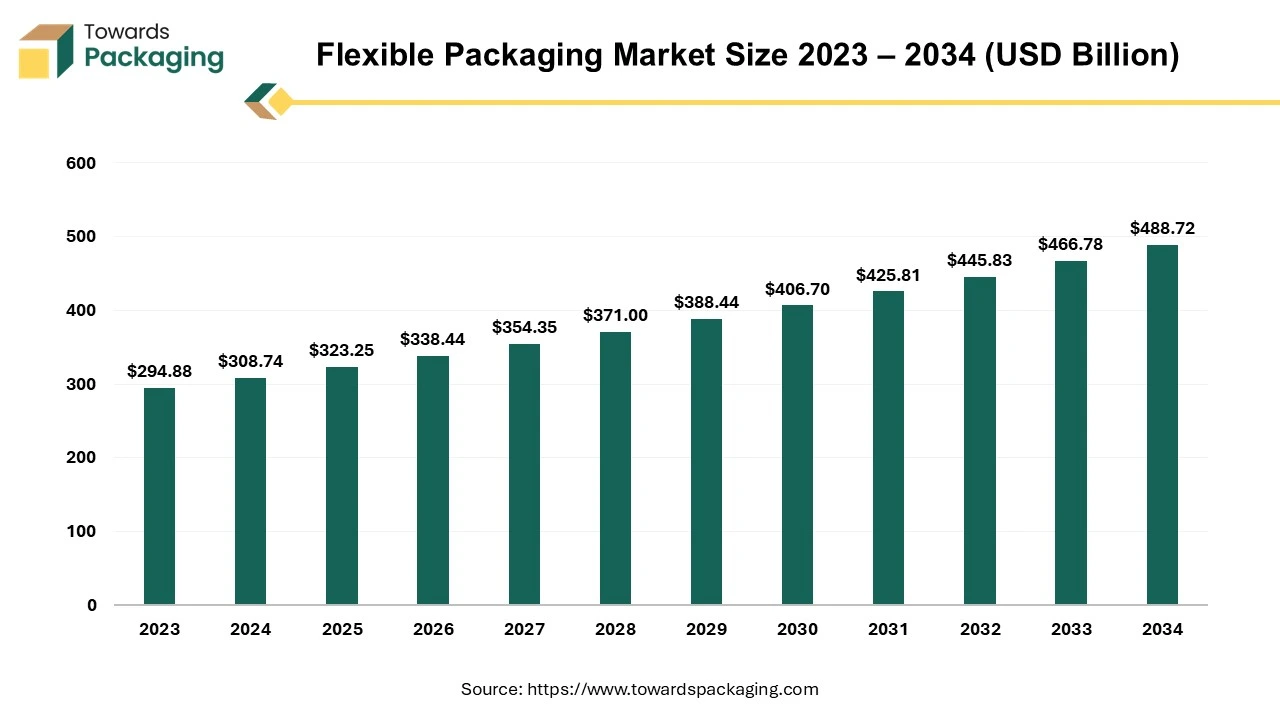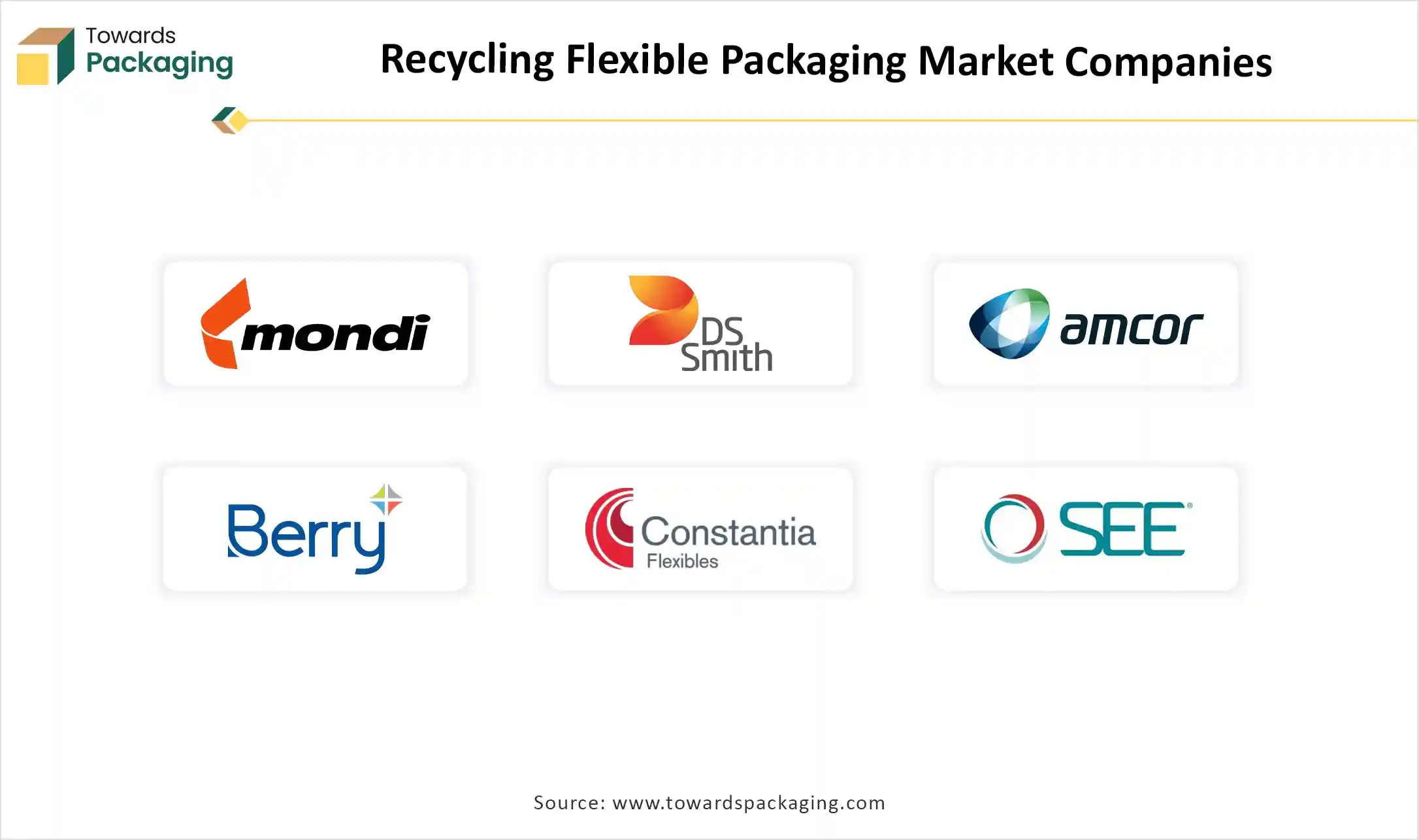The recycling flexible packaging market is growing rapidly, driven by rising sustainability demand and strict packaging regulations. The market is projected to expand significantly through 2034, supported by strong consumption of recyclable pouches, bags, films, and laminates. Europe led the market in 2024, while Asia Pacific is set to grow at the fastest CAGR through 2034, backed by urbanization and strict waste-management rules. North America, Latin America, and the Middle East & Africa continue to expand with increased recycling infrastructure.
Our coverage includes segment-wise data mechanical recycling dominating 2024, chemical recycling growing fastest, pouches leading packaging type, plastics driving material demand, and food & beverages capturing maximum end-use share. We also analyze the competitive ecosystem featuring players like Amcor, Mondi, DS Smith, Huhtamaki, UFlex, Stora Enso, Casella, Borealis, and more. The report further provides detailed value chain mapping, trade data, supplier breakdown, and production insights across NA, Europe, APAC, LATAM, and MEA.
Recycling flexible packaging comprises collecting and processing resources such as pouches, bags, and bottles into new products. This procedure sometimes distinguishes the resources from separate impurities and removes them before redesigning them into a different material. It is a process that reduces the waste materials from the landfills. It is estimated that around 50% of flexible packaging is recyclable in the U.S. All the plastic used in grocery bags, bread bags, and other products is made up of polyethylene, which can easily be recycled. These types of packaging require non-rigid resources that permit more customizable and economical options.
The rising demand for acceptance of minimalist packaging is driven by decreasing excess resources and a focus on important components. It allows to utilize of thin resources, fewer layers, and compact packaging designs.
The demand for compostable packaging is huge in the packaging industry. The rising consumer preference for sustainable packaging and regulatory pressure has raised the demand for such packaging in this market.
The growing concern for functionality and sustainability has enhanced the demand for edible packaging. These packages are majorly made from biodegradable materials such as proteins, seaweeds, and starch that provide an environment-friendly substitute to outdated plastic packaging.
| Metric | Details |
| Major Drivers | - Rising environmental concerns and strict packaging regulations - AI integration in sorting and recycling - Growth of the circular economy |
| Leading Region | Europe |
| Market Segmentation | By Recycling Method, By Packaging Type, By Material Type, By End-Use Industry and By Region |
| Top Key Players | Amcor, Mondi, DS Smith, Berry Global, Constantia Flexibles, Sealed Air, Huhtamaki, UFlex, Stora Enso, Plastipak, Clondalkin, Casella, Crown Holdings, Borealis |
The role of AI in the recycling flexible packaging market is transformative as it is used for the selection of materials while manufacturing packaging for several products according to the requirements. Several flexible resources, like multilayered composites and plastic films, were difficult to recycle because of their complex combination. Various artificial intelligence technologies are utilized for deep learning, and technologies that provide appropriate shape, size, and structure, which are easy to recycle multiple times. This improves the accurateness of unravelling food-grade packaging from other non-food-grade materials mixed together, this process enhances the quality of recycled productions.
Rising Concern for the Ecological Effects Boosts
The increasing concern among people towards the ecological impact of the packages has enhanced the demand for the recycling of the flexible packaging market. The growing concern for plastic waste globally has raised the demand for options that can be either decomposed or recycled multiple times. There are several strict guidelines associated with the packaging industry, which have raised the standard for manufacturing packaging that can be recycled for several other usage. The growing ecological impact is influencing producers and brands to use packaging with a circular solution.
Technological advancement is one of the major factors responsible for the development of the recycling flexible packaging industry. The constant innovation in the recycling technique and material science has made the recycling process of the packaging industry more feasible. Techniques with AI incorporation, mono material designs, and chemical recycling have enabled a higher rate of recycling and enhanced material recovery. The promotion of the circular economy worldwide has encouraged companies to adopt recyclable packaging for products.
High Charges Association
The high charge for production of the recycling flexible packaging has hindered the growth of the market. It includes several processes such as selection of suitable resources, distinguishing recyclable waste from non-recyclable, and several others that have disturbed the growth of the recycling flexible packaging market.
Continuous Evolving Preferences of the Consumers
The recycling flexible packaging market shows considerable opportunities, particularly due to changing preferences of the consumers, technological advancement, and strict government regulations. The major market players are introducing advancements in this sector due to the continuous changes in the demand of consumers. It has opened the scope of the market by enlarging the options for evolution. The development of recycling technology has made the distinguishing process easy, which ultimately speeds up the process of recycling efficiently.
With the incorporation of AI tools, it becomes easy to break down the particles and then recycle the entire packaging. The multiple recycling process has become extremely suitable for consumers looking for eco-friendly packaging options. The continuous supervisory effort of the government has also enhanced this technique of recycling packaging easy, as with the strict selection of materials for the manufacturing process, the recycling procedure speeds up.
Mechanical recycling methods require less energy, are scalable, and cost-effectiveness in comparison to other methods available in the industry. It comprises the physical reprocessing of the plastic wastes generated via steps such as shredding, washing, and then remelting of plastics to transform them into a new structure without disturbing their chemical properties. These simple steps make it an attractive option for bio-degradable substances and manage the plastic waste generated efficiently.
The chemical recycling segment is expected to grow rapidly due to the rising demand for high-performance cleaning services has influenced the demand for chemical recycling processes. These break down complicated or contaminated plastic products into simpler for and recycle them by melting into different structures. Due to chemical recycling, it is possible to produce high-quality multi-layered composite flexible packaging.
The pouches segment dominates the global market as it plays an important role due to its affordability, light-weight nature, versatility, and convenience to utilize, making it perfect to use for consumers. Pouches are well-known for their barrier properties that help to preserve the freshness of the products and extend their shelf life. The rising inclination towards sustainable products raises the demand for these recyclable pouches.
The bags segment is expected to grow at the fastest rate in the market during the forecast period of 2024 to 2034. These are widely used in industries such as agriculture, food, retail, and healthcare, emphasizing their practicality and versatility. These bags are highly adaptable to a wide range of products, which makes them a suitable choice for consumers as well as manufacturers.
The plastics segment dominated the recycling flexible packaging market in 2024. This is due to the lightweight nature, enhanced barrier properties, and durability of the plastic packaging. These packages are considered ideal for protecting the freshness of the food products and extending their shelf life. The highly recyclable plastic is polyethylene terephthalate (PET), which is widely used due to its strength and clarity. Revolution in the recycling technologies has improved the capacity to process contaminated or mixed plastic waste, which enlarges the possibility of recyclable resources.
Biopolymers adoption is growing rapidly due to the renewable source used for these packages has its own ecological benefits. These biopolymers are made up of agricultural waste, corn starch, and sugarcane, which are sustainable substitutes for petroleum-based plastic materials. Their biodegradability has made them appealing due to growing ecological concerns and strict regulations.
The food and beverages sector has a huge demand for bags and pouches that can be recycled easily and utilized multiple times has influenced the development of the market. These can easily be customized into multiple shapes and sizes, which increases their utilization in multiple ways. The rising customer demand for sustainable packaging of products has propelled the acceptance of recycling flexible packaging.
The pharmaceuticals segment is expected to grow at the fastest rate due to the strong requirement for packaging that can provide safety to the products during delivery. Packaging such as high-barrier films, blister packs, and pouches provides required protection against light, moisture, and oxygen, which ensures the shelf-life and efficiency of the products.
Europe held the largest share of the recycling flexible packaging market in 2024, due to the advancement in technology in countries such as the U.K., Germany, Spain, Norway, Denmark, Italy, and several others. The demand for recyclable packaging is high in sectors such as cosmetics, pharmaceuticals, electronics, food and beverages, and many other fields. The strict packaging regulations are one of the major reasons behind the growth of the market.
Asia Pacific is estimated to grow at the fastest rate in the recycling flexible packaging market during the forecast period. In countries such as India, China, Japan, South Korea, and several others, there is a rapid urbanization, which has raised the demand for reducing landfills and has influenced the demand for recycling flexible packaging. Countries like Japan and South Korea are known for their waste management technique, and they have an effective recycling system.
The flexible packaging market is expected to increase from USD 323.25 billion in 2025 to USD 488.72 billion by 2034, growing at a CAGR of 4.7% throughout the forecast period from 2025 to 2034. The shift in consumer behavior toward convenience, coupled with regulatory pressure for eco-friendly solutions, has accelerated market adoption across industries.

The packaging type in which packaging materials is used which can easily change shape, typically manufactured from paper, plastic, foil, or a combination of these. Unlike rigid packaging such metal cans or glass jars, bottles, flexible packaging is lightweight, durable adaptable to various product types. The common types of flexible packaging are bags, pouches, sachets, and wraps & films. The flexible packaging is lightweight, cost effective, has extended shelf-life, sustainable option and convenience features. The flexible packaging is extensively utilized for personal care, pharmaceuticals, industrial applications and food & beverages.

By Recycling Method
By Packaging Type
By Material Type
By End-Use Industry
By Region
December 2025
December 2025
December 2025
December 2025